As children, we probably sowed hardy annuals but they are slightly out of fashion these days. It is a shame because they are some of the most beautiful of all summer flowers and they flower quickly from seed. They often dislike transplanting so are not easy to buy in pots. Instead we sow them where they are to grow and flower. They are perfect for filling areas of the border with colour and they can be sown now.
With May tomorrow and a Bank holiday it is the perfect bit of sowing to do for quick and colourful results.
How to do it
Fork over the area and rake it to get rid of any large lumps. You don’t need to add compost or fertiliser. It is worth taking your time over preparing the soil so you break up the surface so it is fine enough to sow into. Then make shallow drills (trenches) about 1cm deep and 15cm apart. Sow the seeds thinly in this and lightly cover the seeds. Water well.
We sow in rows so we can identify the plants and pull up the weeds – which won’t be in rows! Keep the weeds under control and when the seedlings are big enough to identify and handle, thin them out to about 10cm apart. Thinning is important because if the seedlings are too crowded they won’t have room to grow and will only flower for a short time. It is best to water the rows before thinning and again afterwards to settle the roots.
Don’t worry about the plants being in rows – as they grow they will merge and you won’t see the rows.
These are my favourite annuals, all easy to grow and to sow now and available at Nags Hall.
Limnanthes – poached-egg plants
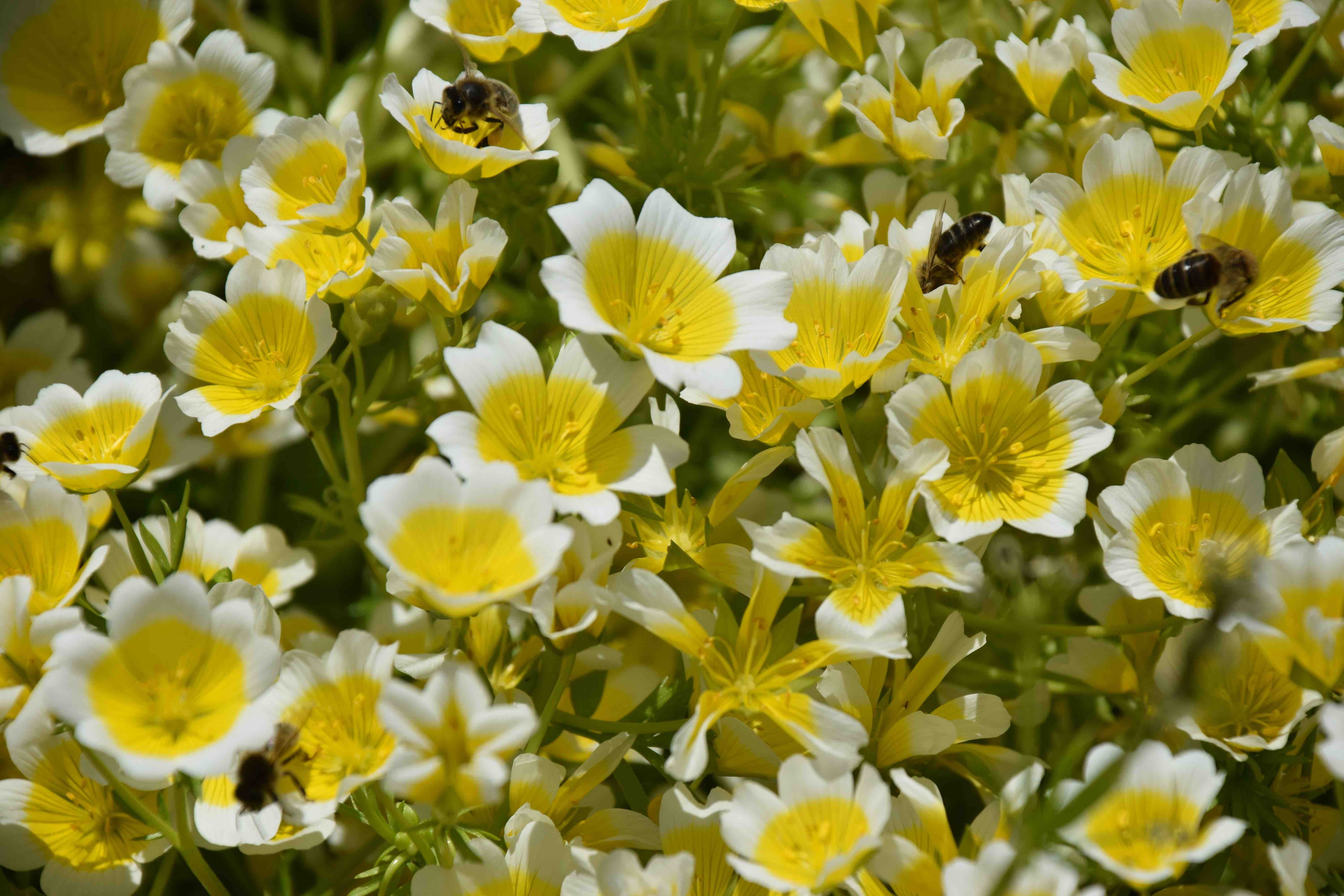
This bright plant, with easy-to-sow, large seeds, will self-seed and naturalise in some gardens. It is a low, spreading plant that makes frilly, bright green rosettes at first which explode into a carpet of flowers. They only bloom for a month or six weeks but are spectacular. They are the best plant I know for honeybees: bumblebees don’t seem that interested but honeybees love them. Leave the plants to die so seeds are shed. These will germinate in September. The plants will survive winter and you will get an even better display next May.
Nigella – love-in-a-mist
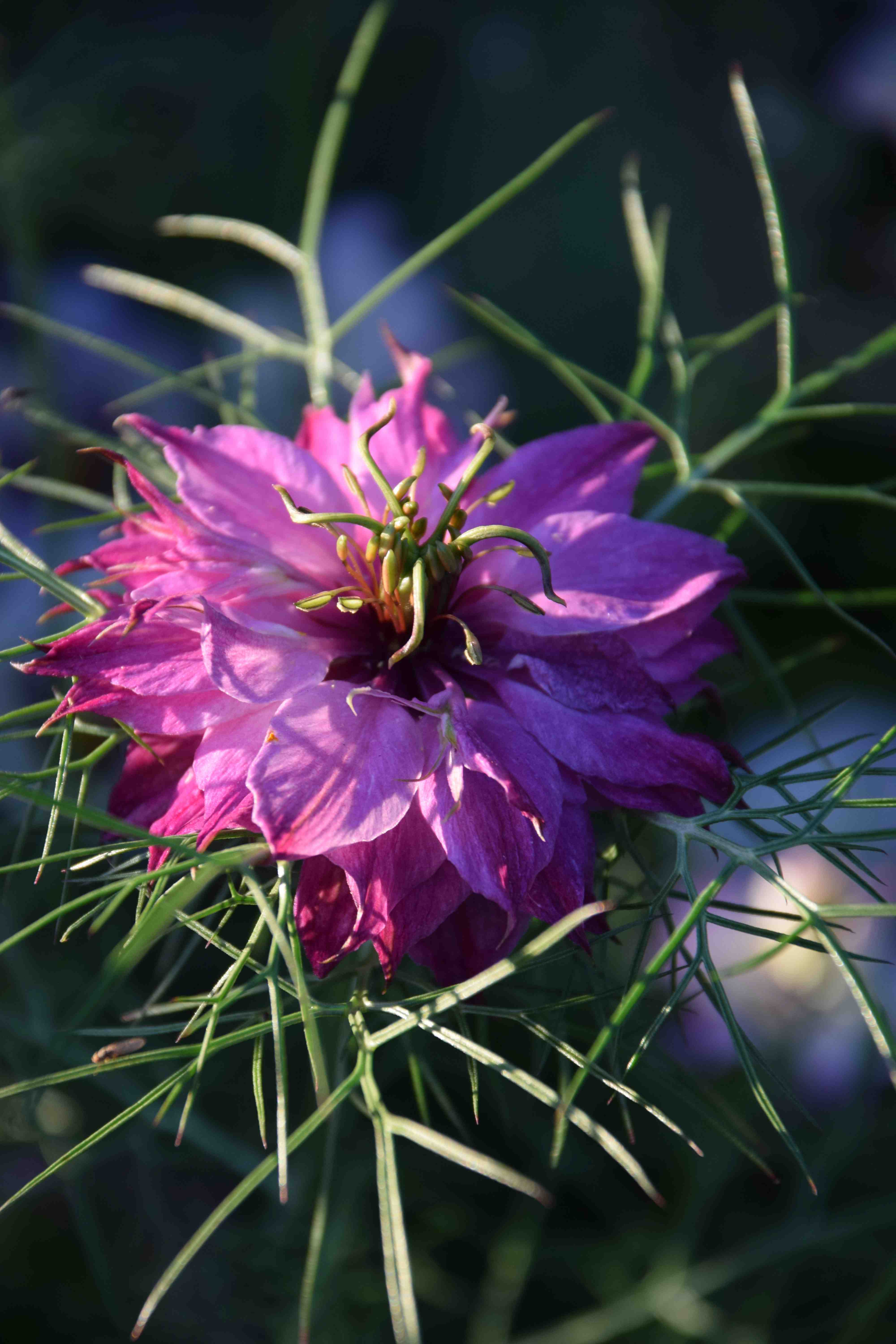
This much-loved annual forms feathery, bushy mounds covered in delicate flowers of many colours. The seed pods are pretty too. A good plant for pollinators and great for cutting.
Papaver somniferum – opium poppy
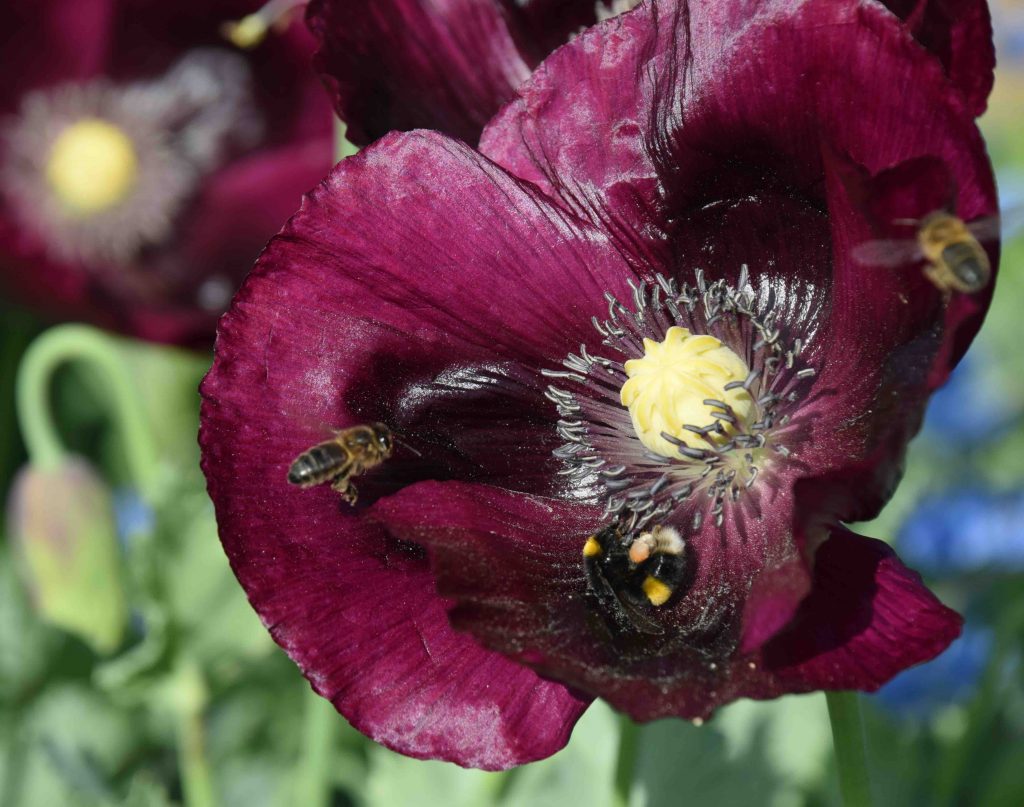
This is the most popular annual poppy and flowers are of many colours and many are double. The one above is ‘Lauren’s Grape’. The plants are big and bold, up to 1m high, with large grey leaves. They are usually in bloom for a month or so and the seedpods are ideal for drying. The flowers don’t have much nectar but they shed masses of pollen that will attract bees of all kinds.
Papaver commutatum – Ladybird poppy
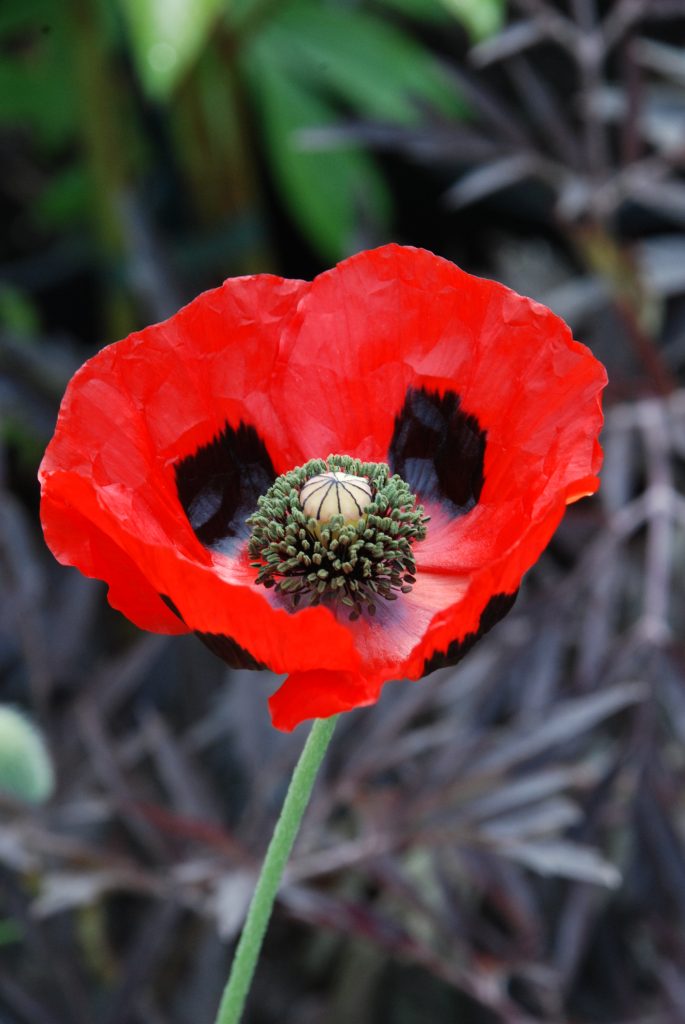
This wild poppy is everything a poppy should be – brilliant red with big black blotches. It is a bushy plant that flowers for a long time and will self seed in light soils.
Cornflower
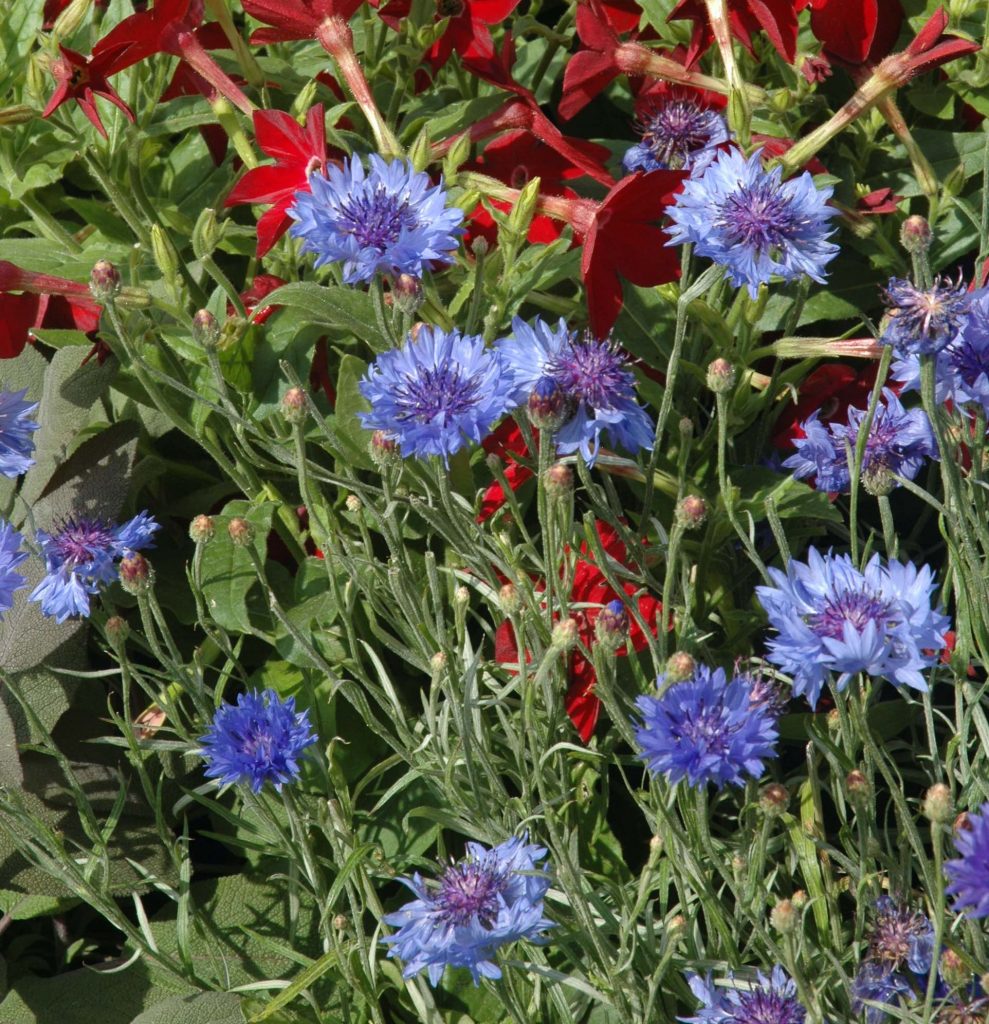
Cornflowers are traditionally blue but there are many more colours and all attract bees and butterflies. The rather spindly plants often need support and they flower for a long time. The seeds on the old plants attract finches too.
Zinnia

Zinnias like heat and sun and are often thought of as tricky. I admit that I often get a head start on these, sowing in cell trays now and planting out the seedlings. But never damage the roots – they dislike root damage. Sowing direct means your plants will start to bloom a little later but they will bloom right into autumn. They are best in full sun. The flowers have an amazing range of colours and shapes and attract bees and butterflies. They are long-lasting cut flowers too.
Tropaeolum majus – nasturtiums
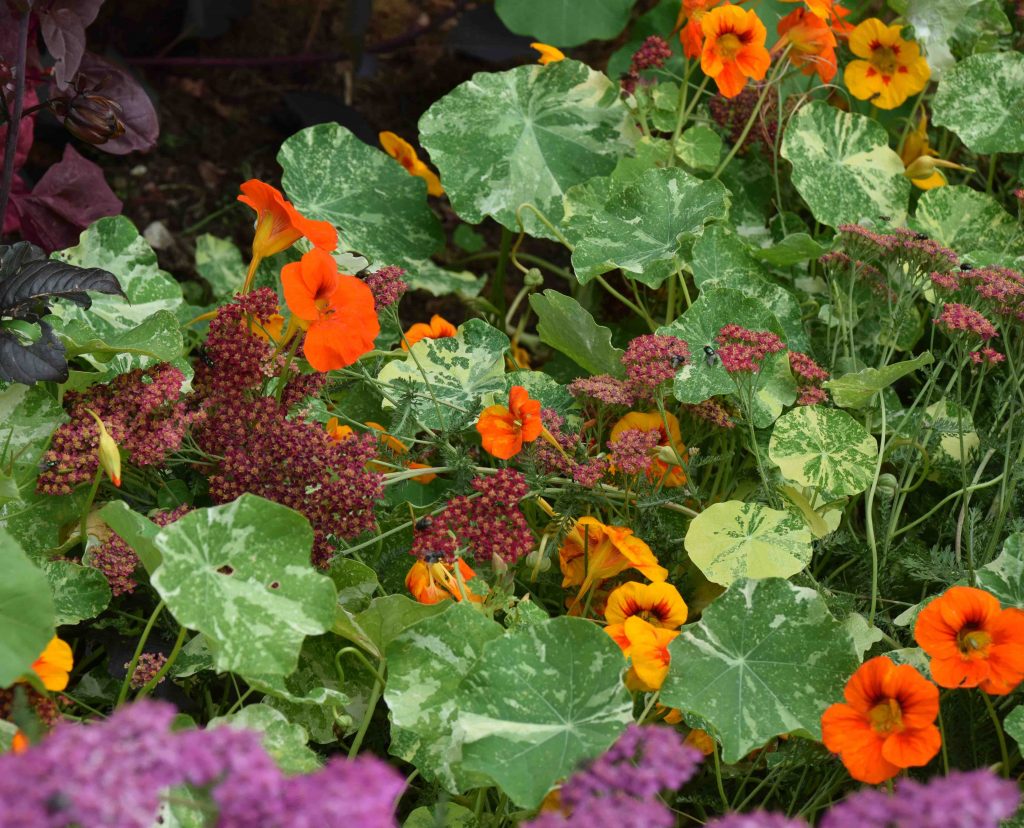
So easy they are almost weeds, nasturtiums can be dwarf or climbing. They grow fast and can keep down weeds and the flowers attract bumblebees. Of course they are also edible and you can add leaves and flowers to salads. Because the seeds are so easy to handle you can sow them individually 30cm apart. They will often self seed.
Helianthus – sunflower
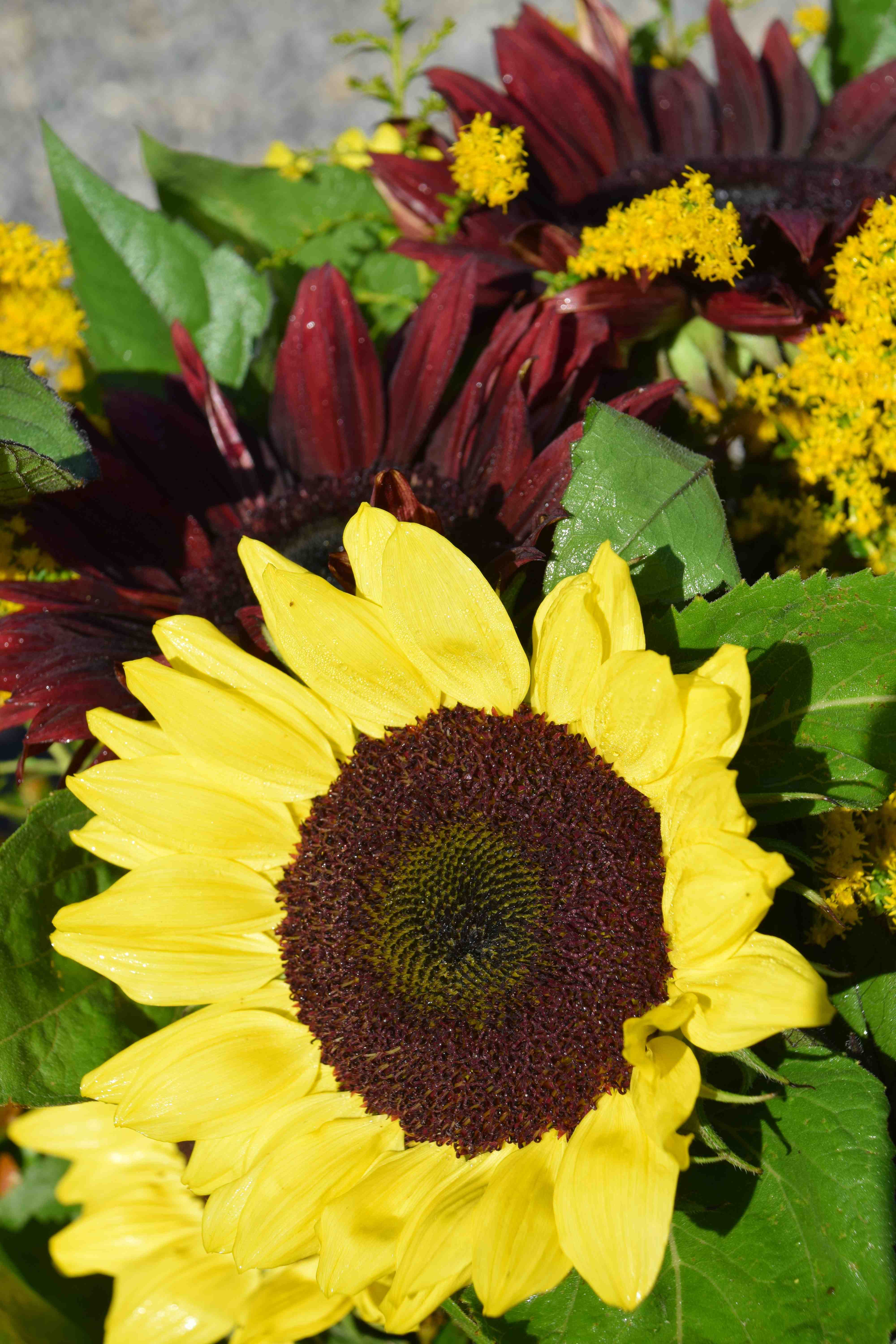
Sunflowers vary in height from 30-200cm or more and they are not all yellow. Sow them in very rich soil if you want giant plants and give them space. Protect the seedlings (and all annuals) from snails and slugs. When choosing your seeds, avoid ‘pollen-free’ varieties if you want to help wildlife because these will not produce pollen for the bees or seeds for the birds. They are developed for cut flowers which don’t drop pollen on your furnishings!
Lavatera
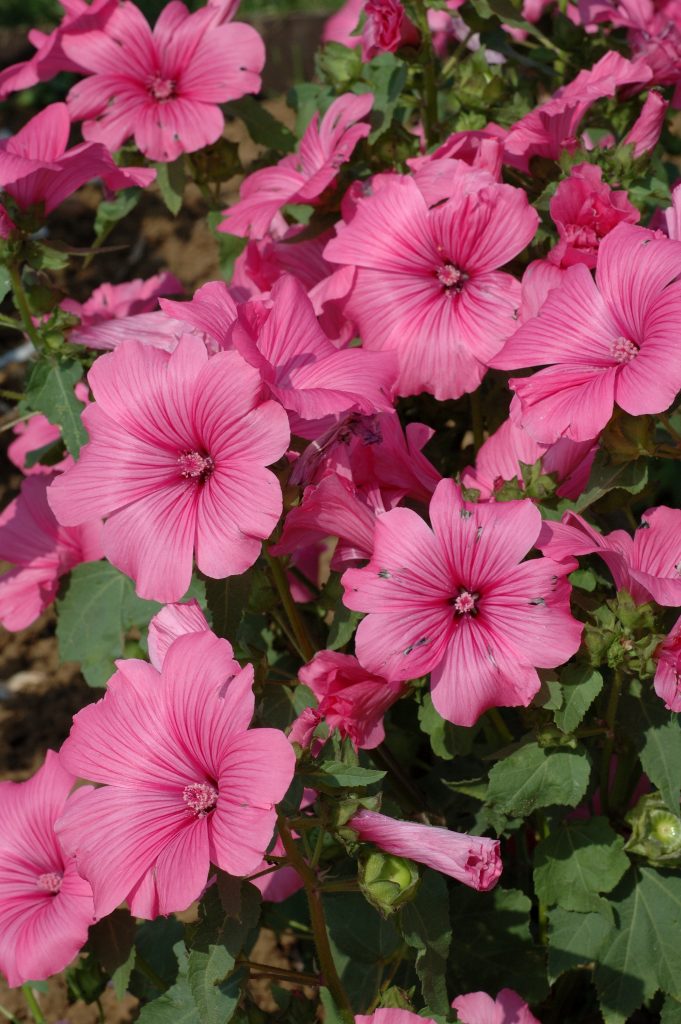
When you see a patch of lavatera in full bloom it is hard to believe these are so easily grown from seed. In shades of pink and white, these robust, bushy plants cover themselves with silky blooms. They flower for many weeks and are great for filling large areas with dazzling colour.
Lobularia – alyssum
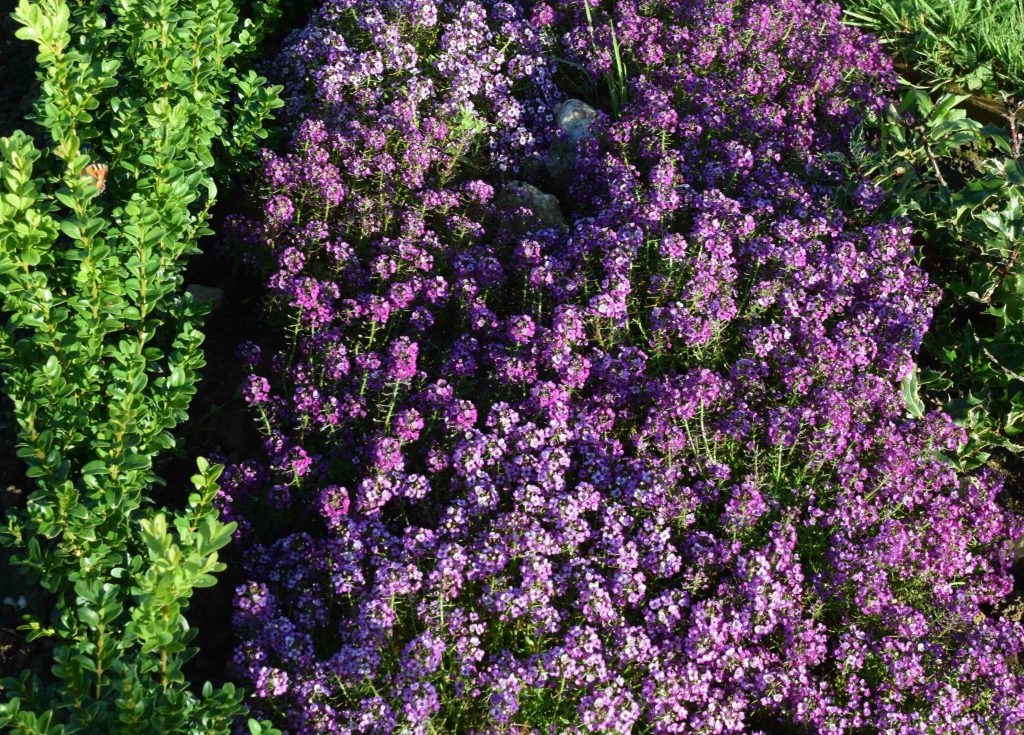
Alyssum is a rather neglected annual but deserves a place at the front of the border for the mass of small, fragrant flowers that are usually white but can be shades of purple too. Bees and butterflies love this and it is quick to bloom from sowing.
Clarkia
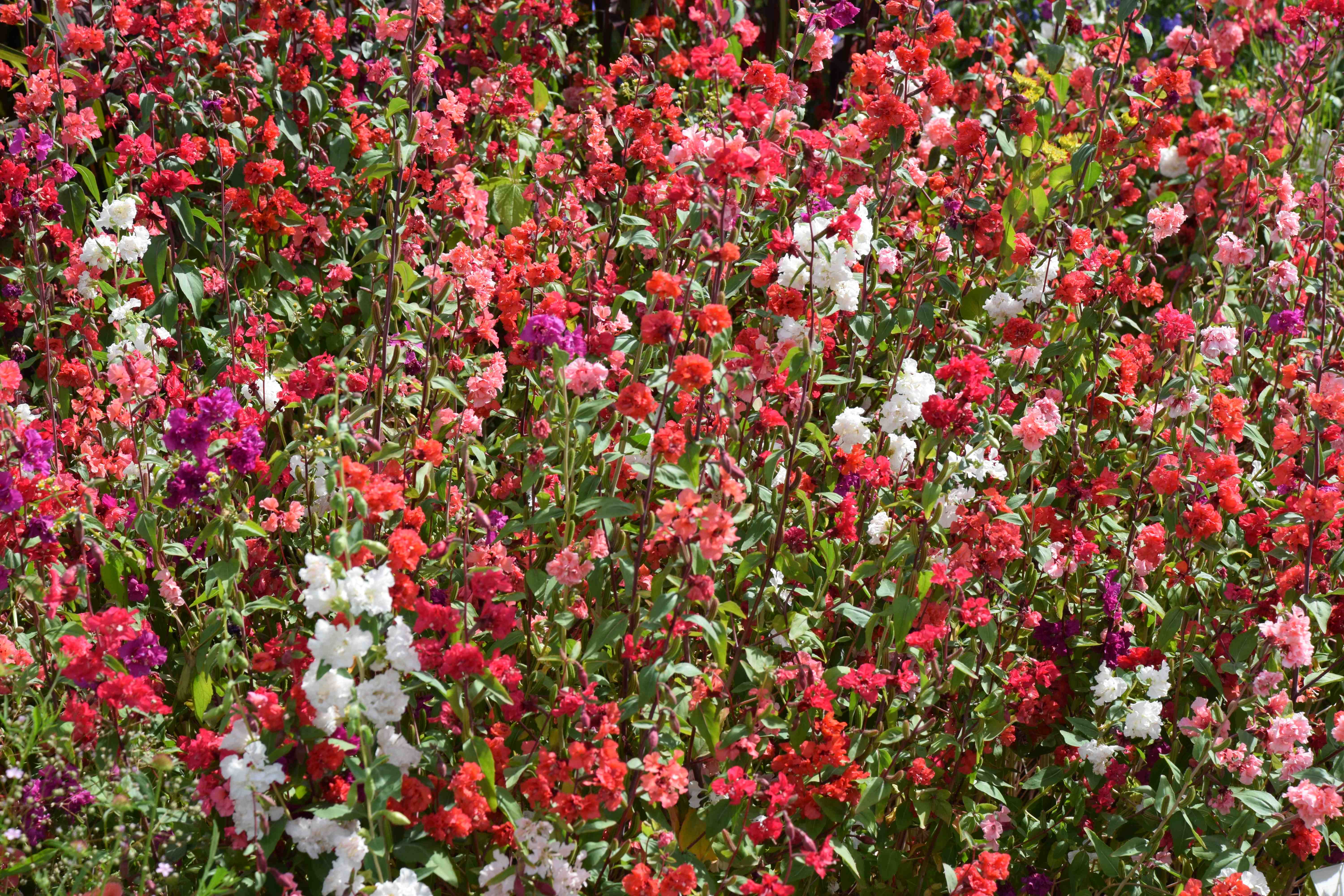
Few people grow clarkia these days and I can’t understand why. The plants are upright and bushy and the tall stems (about 80cm) are set with masses of frilly flowers in a wide range of colours. They make great cut flowers. Most are double-flowered so not the best for bees. But for garden colour they are amazing.
Sweet peas
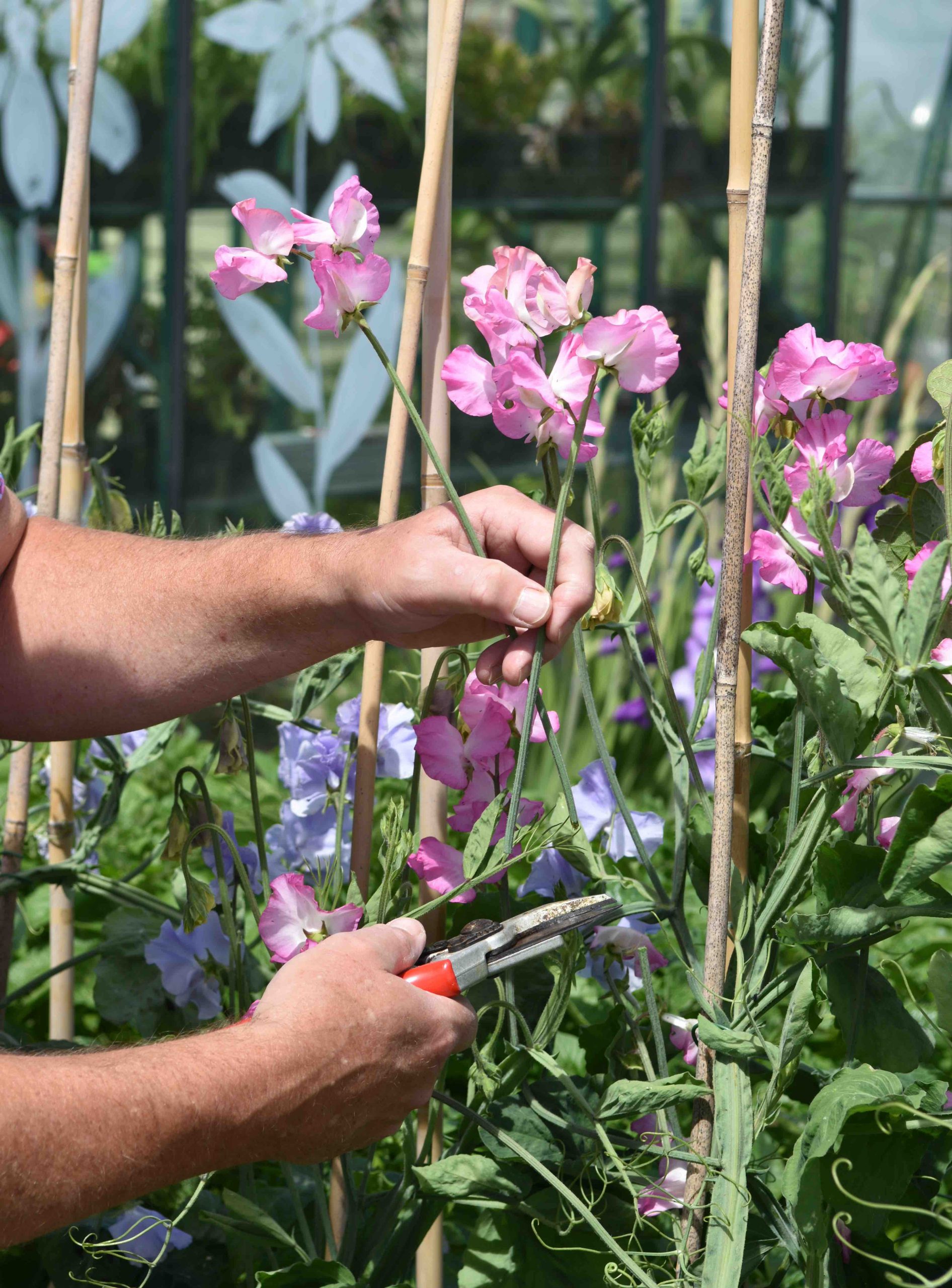
I usually sow my sweet peas in autumn but there is just time to sow some now and they will grow quickly, to give you fragrant blooms from August onwards. Summer is not complete without their fragrance.
All these seeds are still available at Nag’s Hall and can be sown now